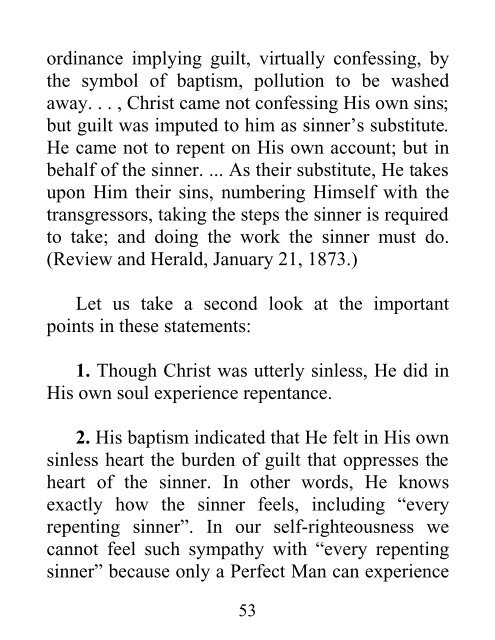Bible Repentance: Path to Love - Robert J. Wieland
You also want an ePaper? Increase the reach of your titles
YUMPU automatically turns print PDFs into web optimized ePapers that Google loves.
ordinance implying guilt, virtually confessing, by<br />
the symbol of baptism, pollution <strong>to</strong> be washed<br />
away. . . , Christ came not confessing His own sins;<br />
but guilt was imputed <strong>to</strong> him as sinner’s substitute.<br />
He came not <strong>to</strong> repent on His own account; but in<br />
behalf of the sinner. ... As their substitute, He takes<br />
upon Him their sins, numbering Himself with the<br />
transgressors, taking the steps the sinner is required<br />
<strong>to</strong> take; and doing the work the sinner must do.<br />
(Review and Herald, January 21, 1873.)<br />
Let us take a second look at the important<br />
points in these statements:<br />
1. Though Christ was utterly sinless, He did in<br />
His own soul experience repentance.<br />
2. His baptism indicated that He felt in His own<br />
sinless heart the burden of guilt that oppresses the<br />
heart of the sinner. In other words, He knows<br />
exactly how the sinner feels, including “every<br />
repenting sinner”. In our self-righteousness we<br />
cannot feel such sympathy with “every repenting<br />
sinner” because only a Perfect Man can experience<br />
53

















